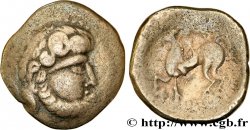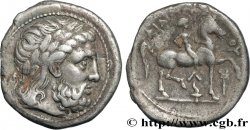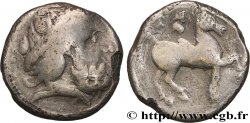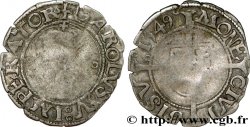bga_331055 - DANUBIAN CELTS - TETRADRACHMS IMITATIONS OF PHILIP II AND HIS SUCCESSORS T√©tradrachme ‚Äúau monogramme d‚ÄôAudol√©on‚ÄĚ et au trisk√®le - collection Trampitsch
–Ĺ–Ķ–ī–ĺ—Ā—ā—É–Ņ–Ĺ—č–Ļ.
–Ę–ĺ–≤–į—Ä —É–∂–Ķ –Ņ—Ä–ĺ–ī–į–Ĺ –≤ –Ĺ–į—ą–Ķ–ľ –ł–Ĺ—ā–Ķ—Ä–Ĺ–Ķ—ā-–ľ–į–≥–į–∑–ł–Ĺ–Ķ (2014)
–¶–Ķ–Ĺ–į: : 1 000.00 €
–Ę–ĺ–≤–į—Ä —É–∂–Ķ –Ņ—Ä–ĺ–ī–į–Ĺ –≤ –Ĺ–į—ą–Ķ–ľ –ł–Ĺ—ā–Ķ—Ä–Ĺ–Ķ—ā-–ľ–į–≥–į–∑–ł–Ĺ–Ķ (2014)
–¶–Ķ–Ĺ–į: : 1 000.00 €
–Ę–ł–Ņ T√©tradrachme ‚Äúau monogramme d‚ÄôAudol√©on‚ÄĚ et au trisk√®le - collection Trampitsch
–Ē–į—ā–į: c. IIe-Ier si√®cles AC.
–ú–Ķ—ā–į–Ľ–Ľ: silver
–Ē–ł–į–ľ–Ķ—ā—Ä: 23 mm
–ě—Ä–ł–Ķ–Ĺ—ā–į—Ü–ł—Ź –ĺ—Ā–Ķ–Ļ –ľ–ĺ–Ĺ–Ķ—ā—č: 6 h.
–í–Ķ—Ā: 12,10 g.
–†–Ķ–ī–ļ–ĺ—Ā—ā—Ć: R2
–ö–ĺ–ľ–ľ–Ķ–Ĺ—ā–į—Ä–ł–ł –ĺ —Ā–ĺ—Ā—ā–ĺ—Ź–Ĺ–ł–ł
Magnifique monnaie complète et homogène, avec une agréable patine grise de collection ancienne
–°—Ā—č–Ľ–ļ–ł –≤ –ļ–į—ā–į–Ľ–ĺ–≥–Ķ: :
–ü—Ä–ĺ–ł—Ā—Ö–ĺ–∂–ī–Ķ–Ĺ–ł–Ķ:
Cet exemplaire provient de la collection A. Trampitsch n¬į 361, dispers√©e par J. VINCHON
–õ–ł—Ü–Ķ–≤–į—Ź —Ā—ā–ĺ—Ä–ĺ–Ĺ–į
–ź–≤–Ķ—Ä—Ā: –Ľ–Ķ–≥–Ķ–Ĺ–ī–į: AN√ČPIGRAPHE.
–ź–≤–Ķ—Ä—Ā: –ĺ–Ņ–ł—Ā–į–Ĺ–ł–Ķ: T√™te barbare, laur√©e et barbue de Zeus √† droite.
–ě–Ī—Ä–į—ā–Ĺ–į—Ź —Ā—ā–ĺ—Ä–ĺ–Ĺ–į
–†–Ķ–≤–Ķ—Ä—Ā: –Ľ–Ķ–≥–Ķ–Ĺ–ī–į: AN√ČPIGRAPHE.
–†–Ķ–≤–Ķ—Ä—Ā: –ě–Ņ–ł—Ā–į–Ĺ–ł–Ķ: Cavalier tr√®s stylis√©, tenant un b√Ęton, sur un cheval r√©aliste avec une queue tr√®s d√©velopp√©e ; une volute devant le poitrail, un pi boulet√©e sous la jambe gauche du cheval et un trisk√®le sous le ventre ; derri√®re le cavalier, une arabesque.
–ö–ĺ–ľ–ľ–Ķ–Ĺ—ā–į—Ä–ł–Ļ
Sur ce type, la couronne de laurier est tr√®s importante d'o√Ļ l'appellation de "Verkehrten Lorbeerkranz".








 C–ĺ–ĺ–Ī—Č–ł—ā—Ć –ĺ–Ī –ĺ—ą–ł–Ī–ļ–Ķ
C–ĺ–ĺ–Ī—Č–ł—ā—Ć –ĺ–Ī –ĺ—ą–ł–Ī–ļ–Ķ –†–į—Ā–Ņ–Ķ—á–į—ā–į—ā—Ć —Ā—ā—Ä–į–Ĺ–ł—Ü—É
–†–į—Ā–Ņ–Ķ—á–į—ā–į—ā—Ć —Ā—ā—Ä–į–Ĺ–ł—Ü—É –ě—ā–Ņ—Ä–į–≤–ł—ā—Ć –ľ–ĺ–Ļ –≤—č–Ī–ĺ—Ä
–ě—ā–Ņ—Ä–į–≤–ł—ā—Ć –ľ–ĺ–Ļ –≤—č–Ī–ĺ—Ä –ó–į–ī–į—ā—Ć –≤–ĺ–Ņ—Ä–ĺ—Ā
–ó–į–ī–į—ā—Ć –≤–ĺ–Ņ—Ä–ĺ—Ā Consign / sell
Consign / sell
 –ė–Ĺ—Ą–ĺ—Ä–ľ–į—Ü–ł—Ź
–ė–Ĺ—Ą–ĺ—Ä–ľ–į—Ü–ł—Ź











